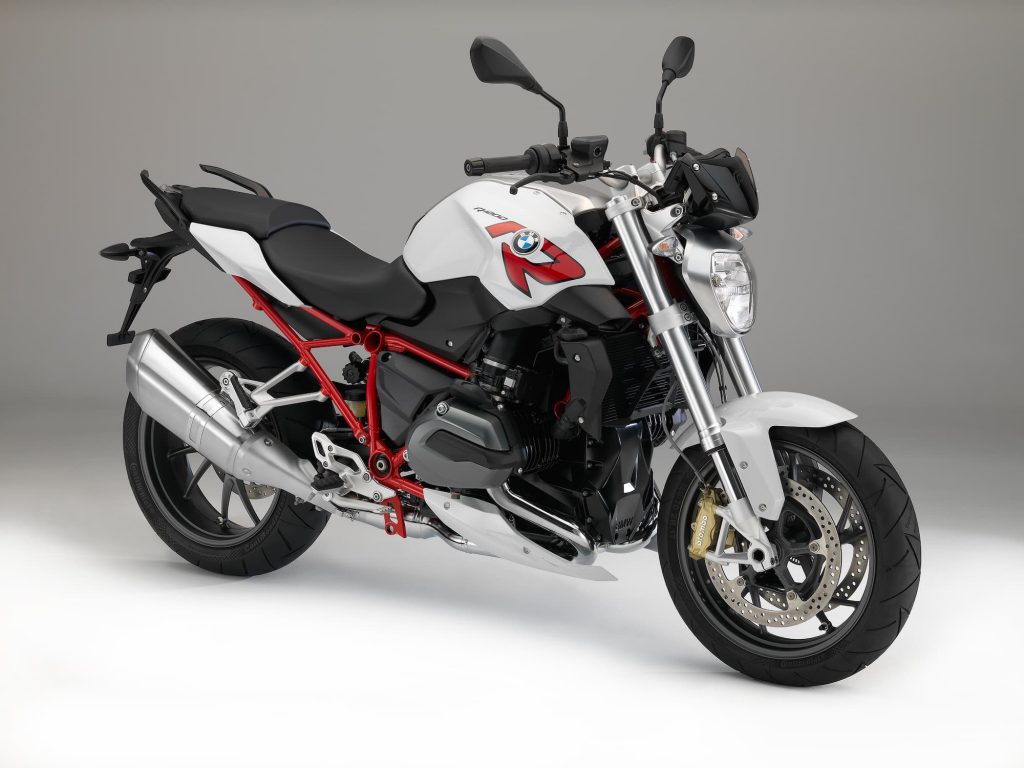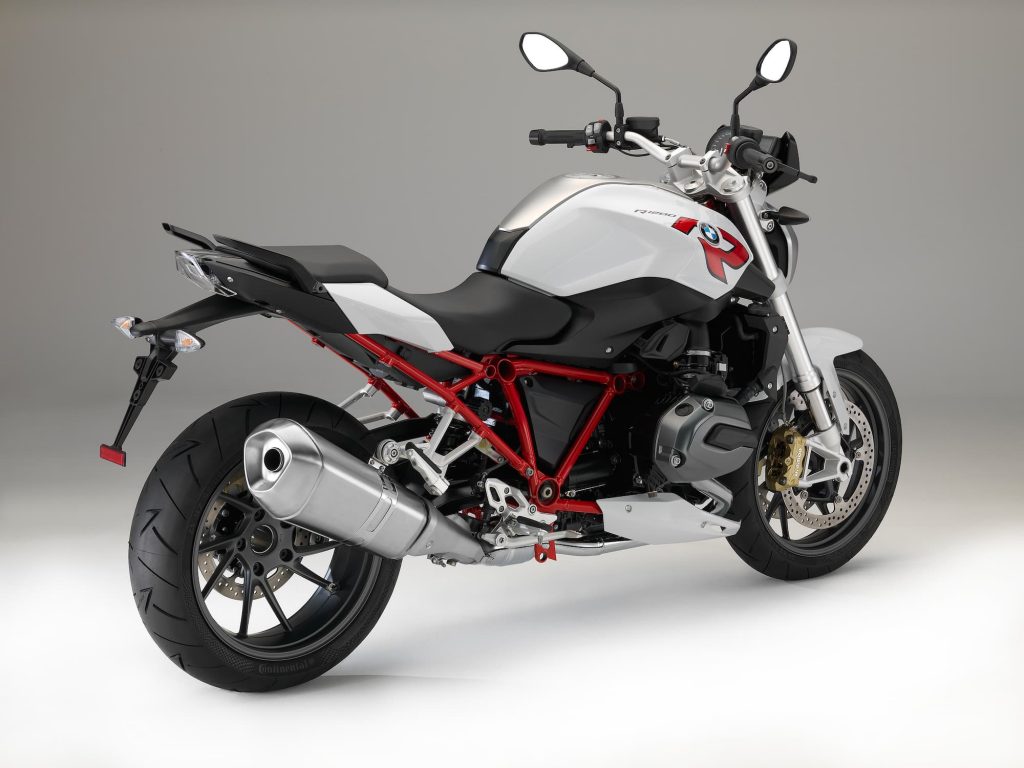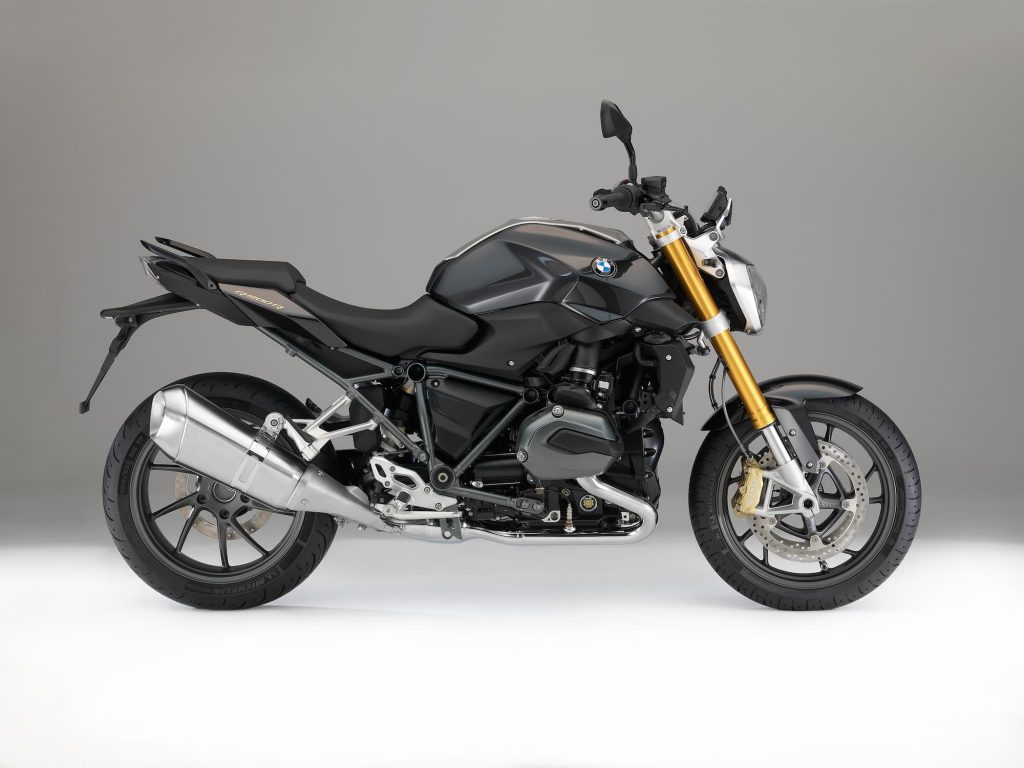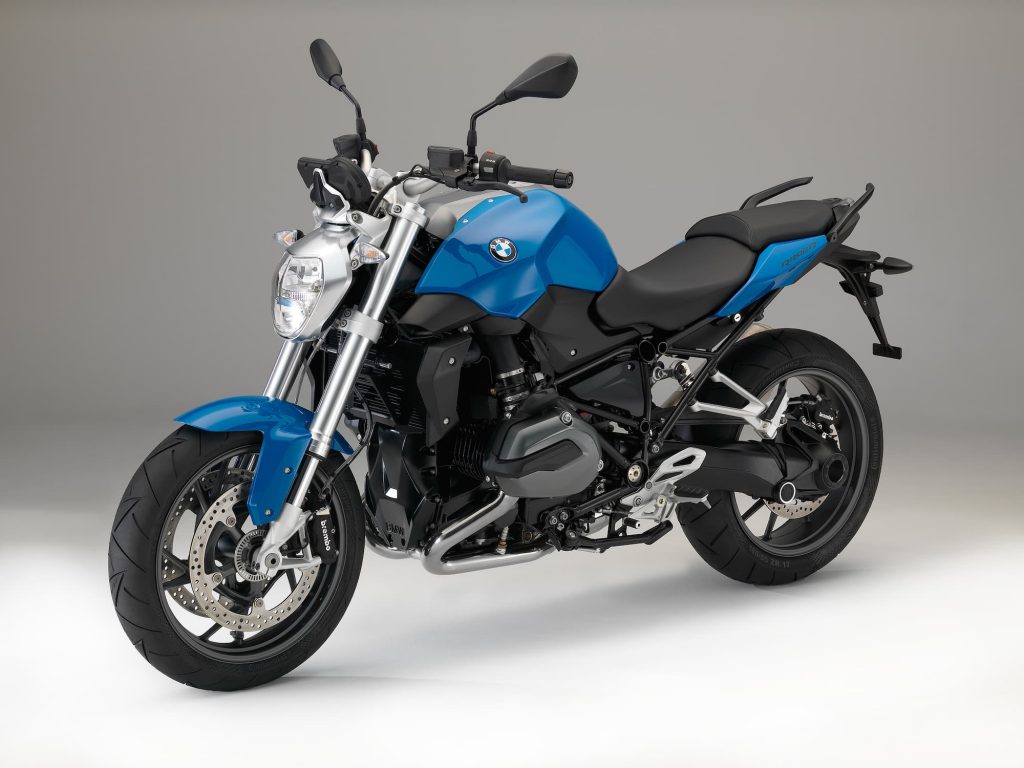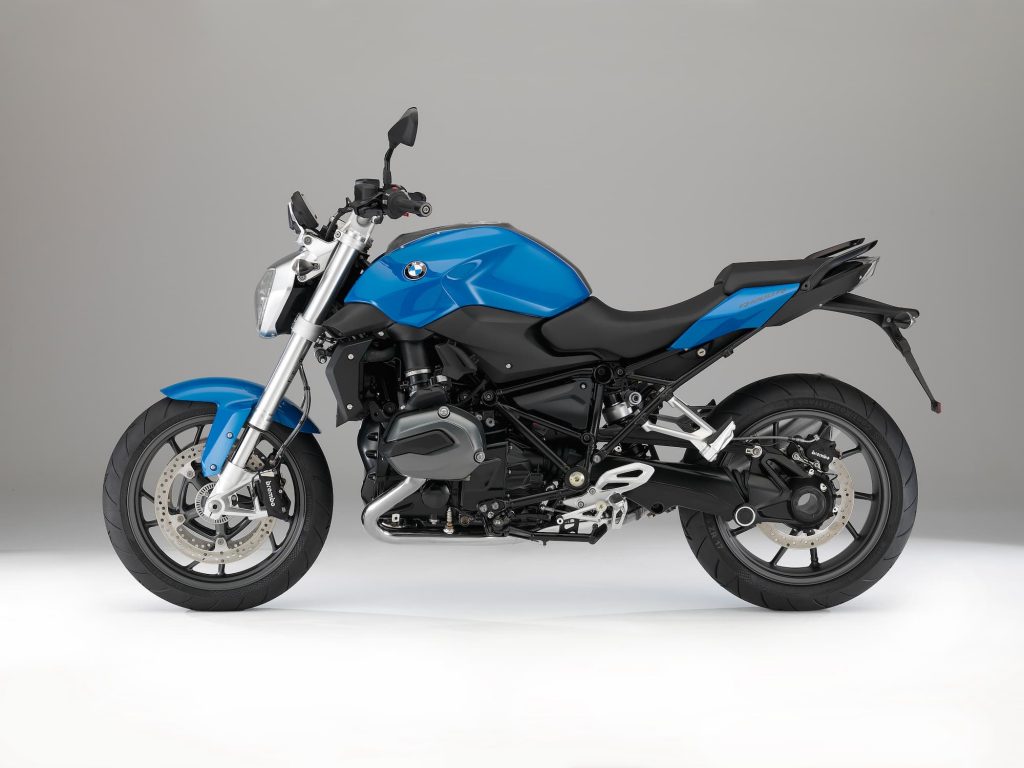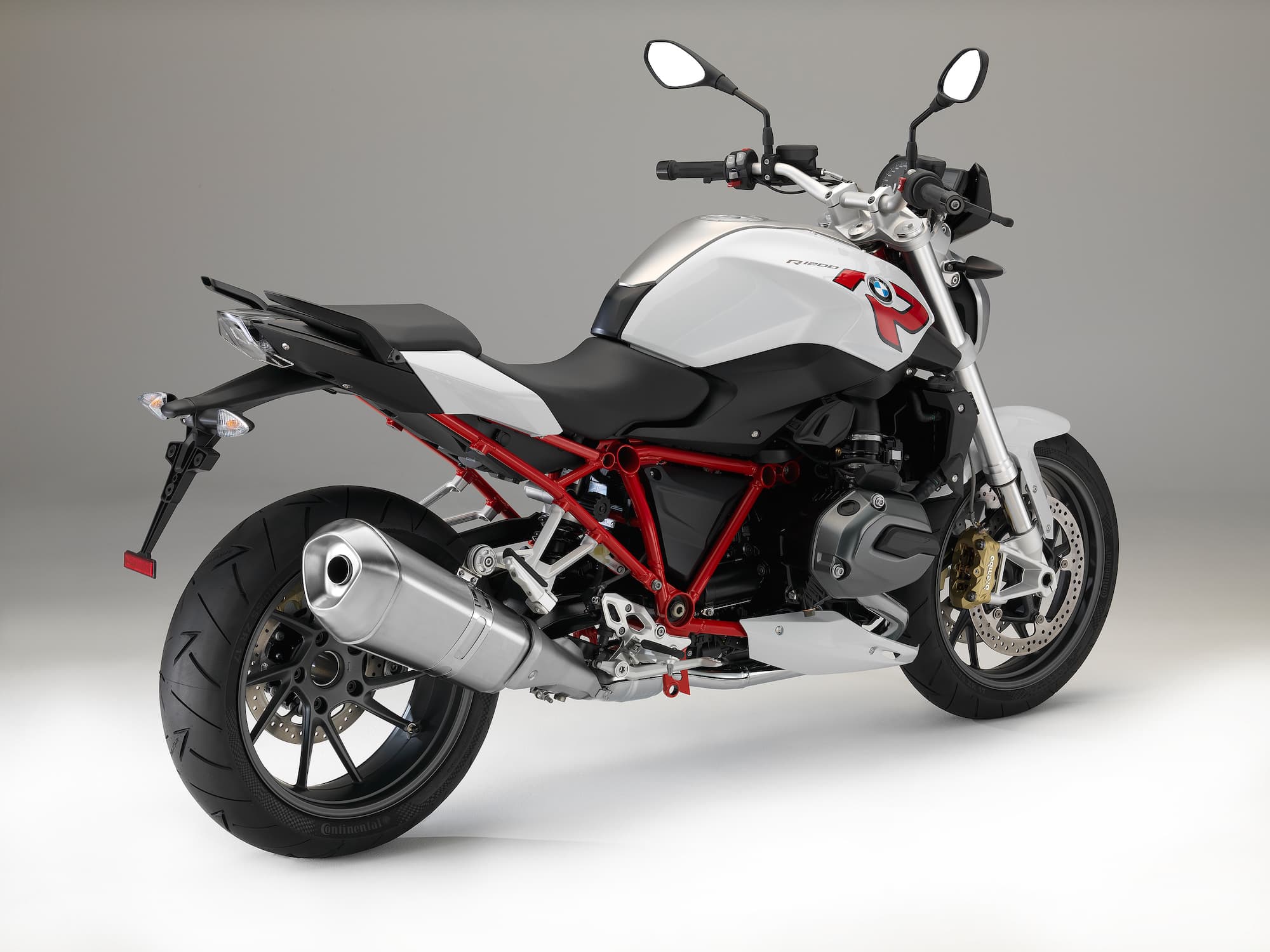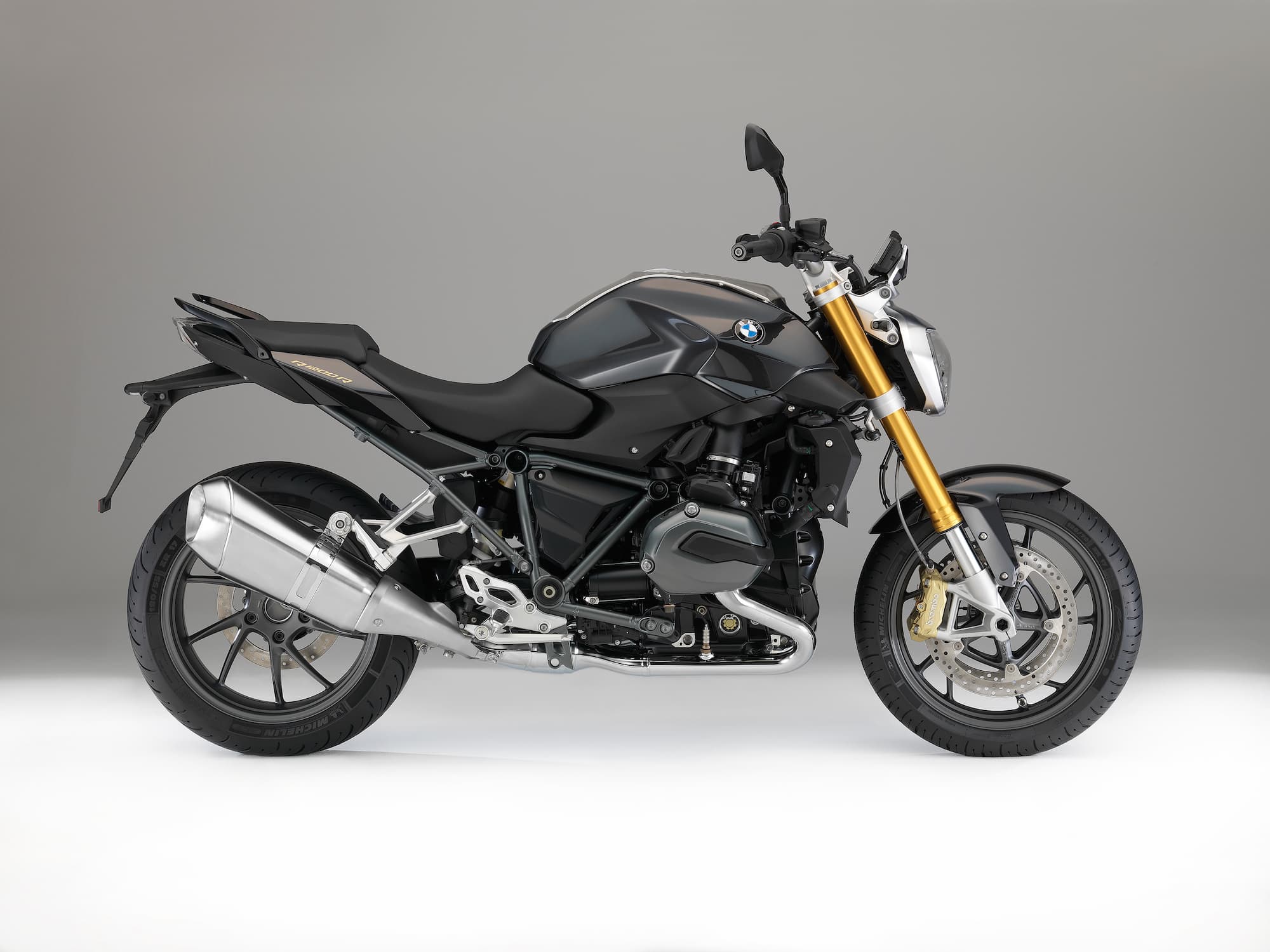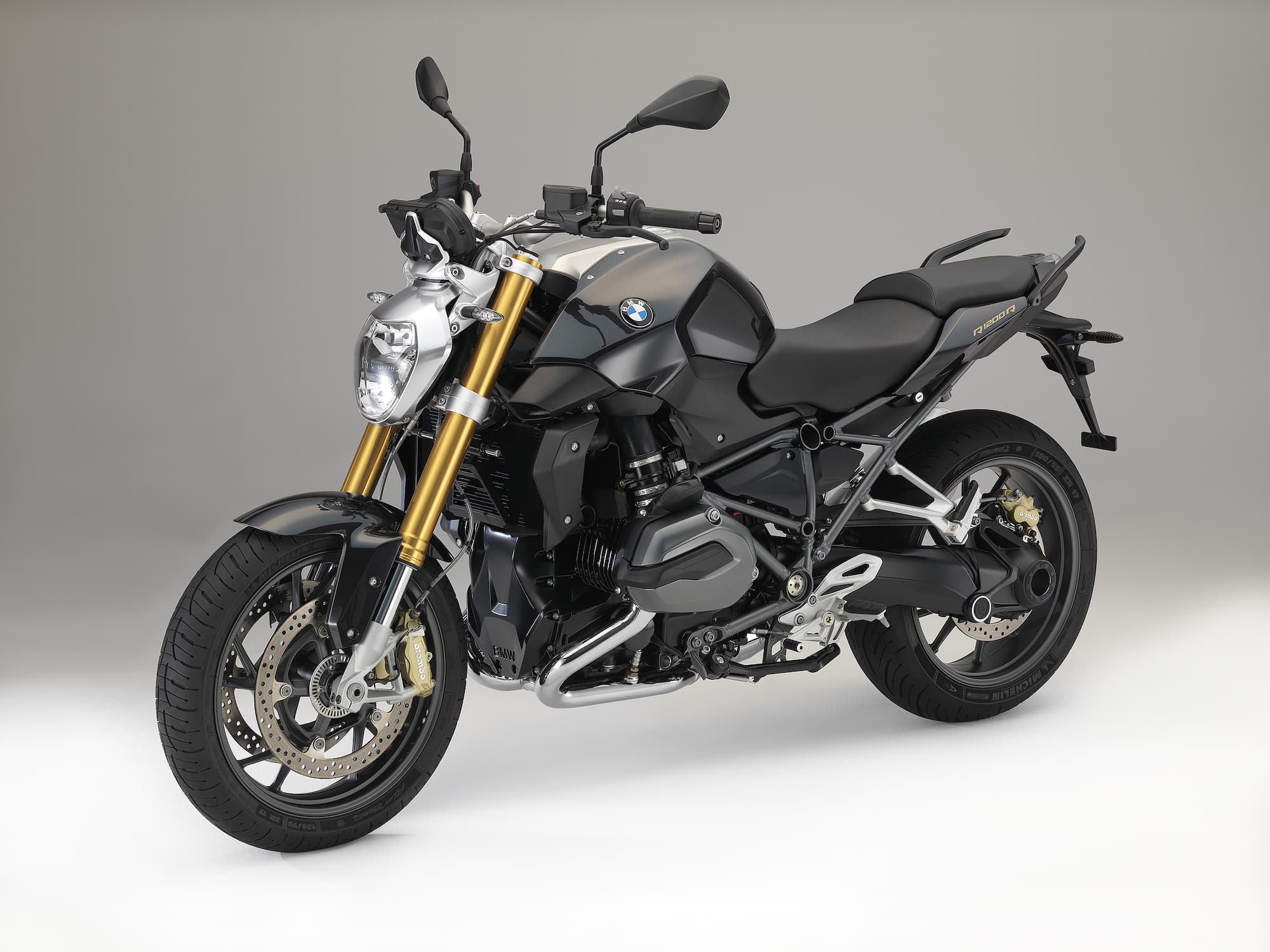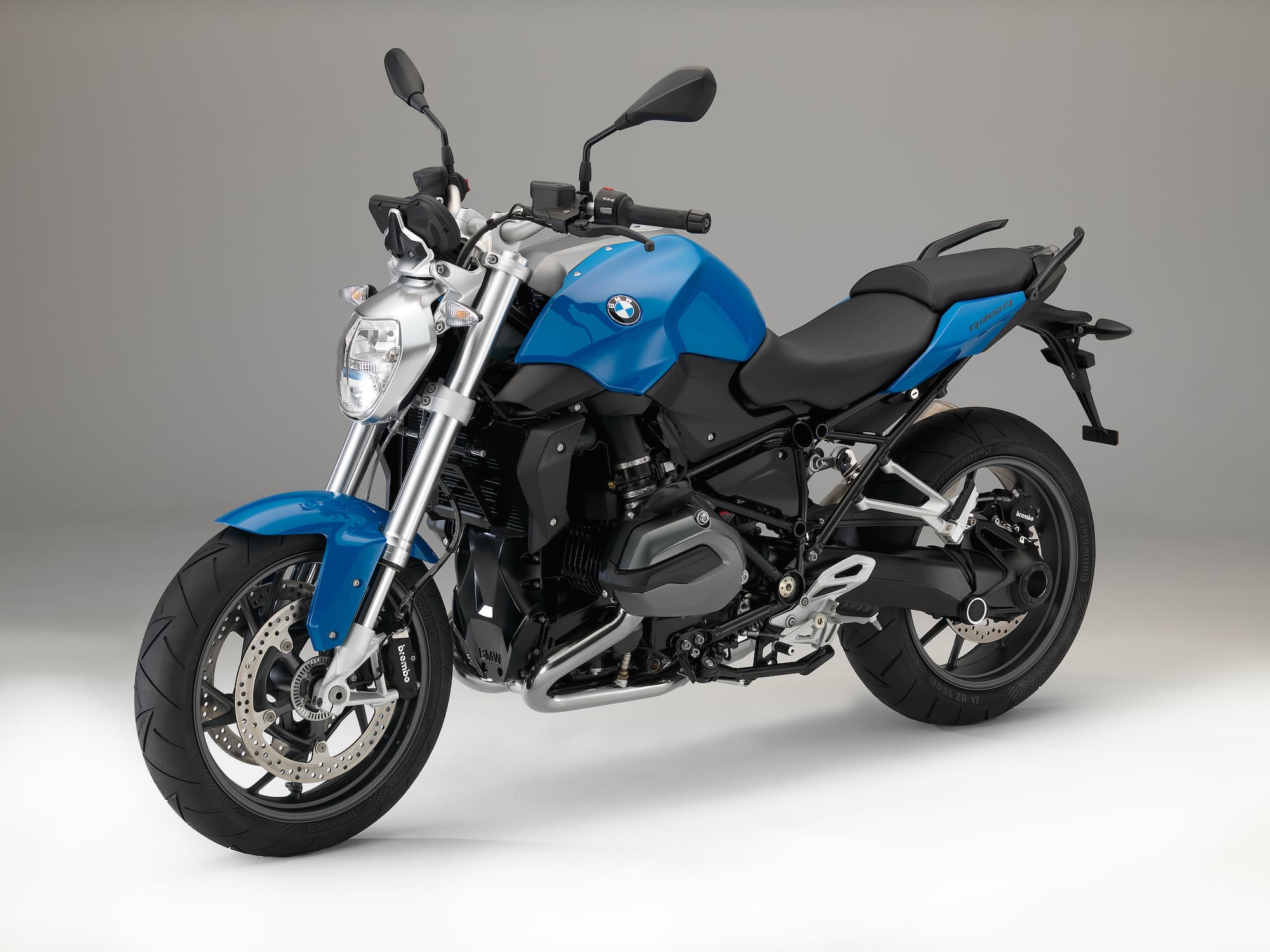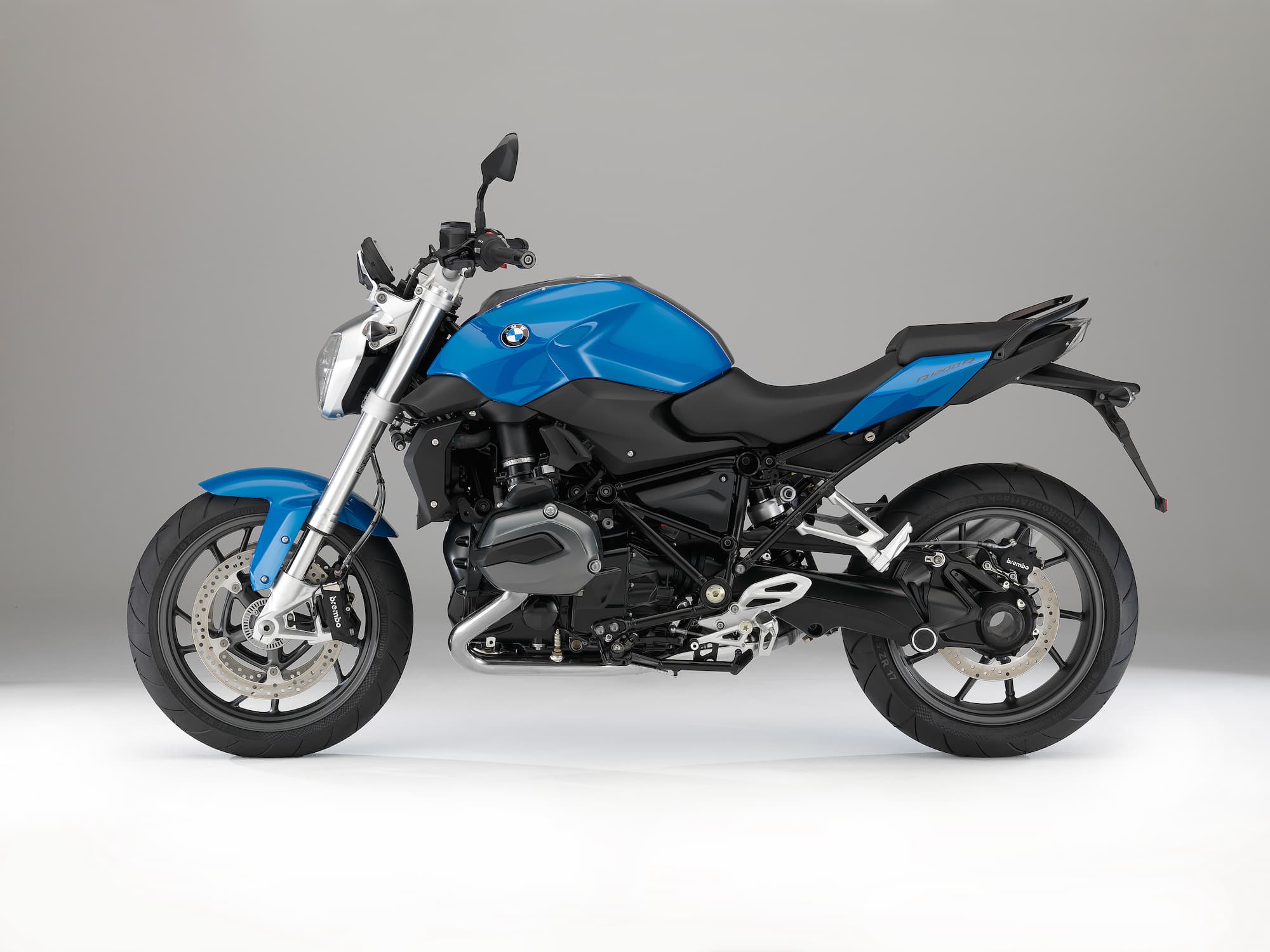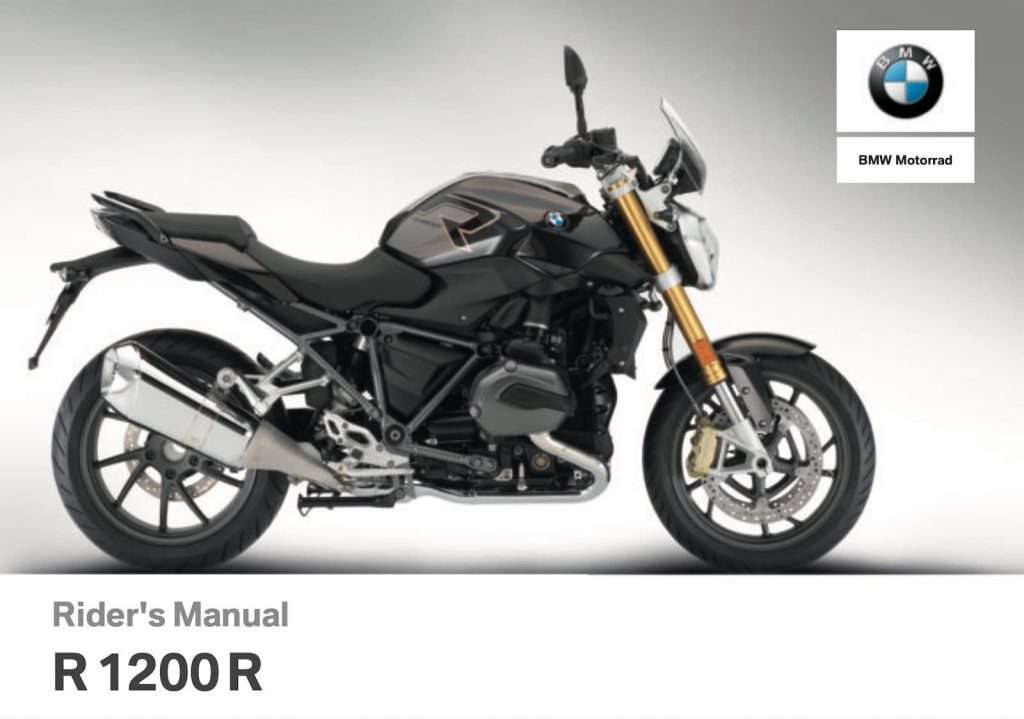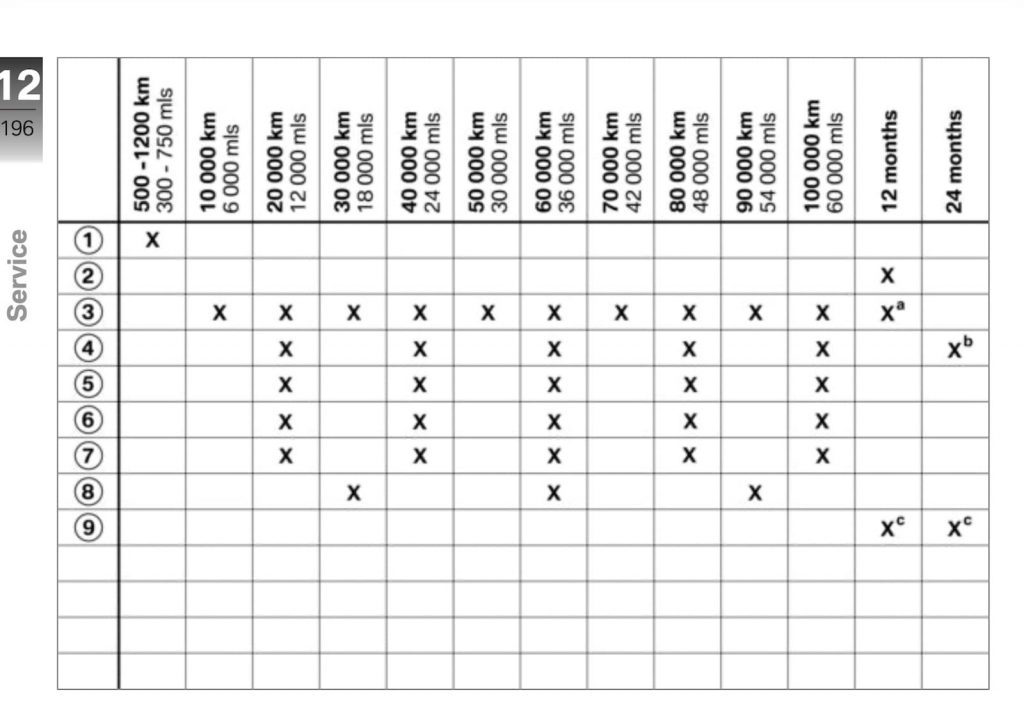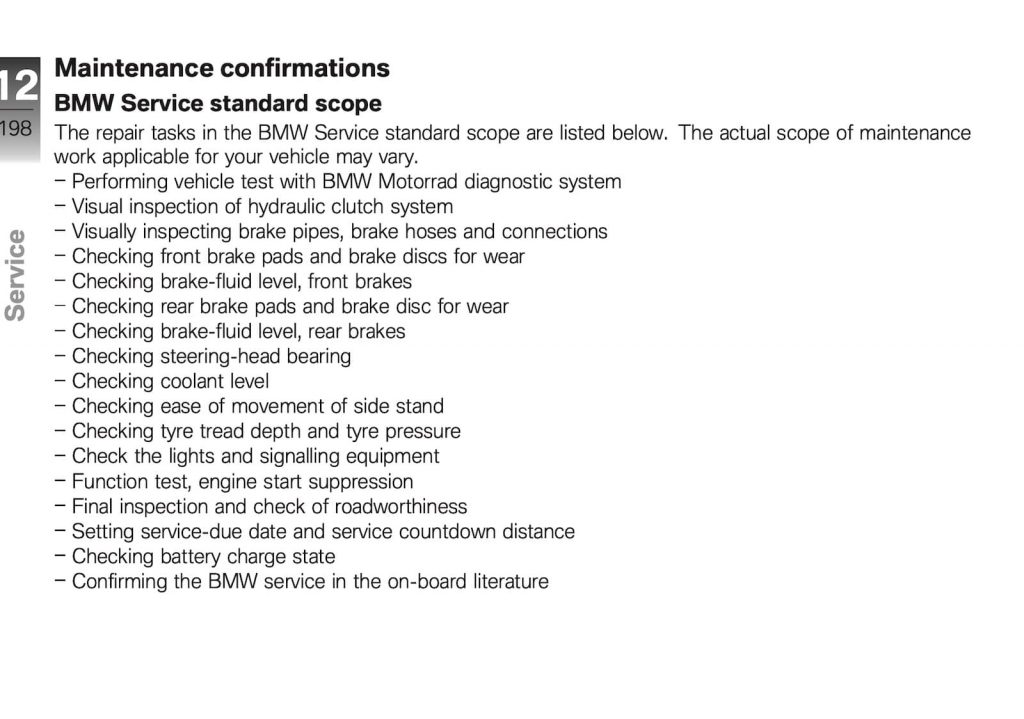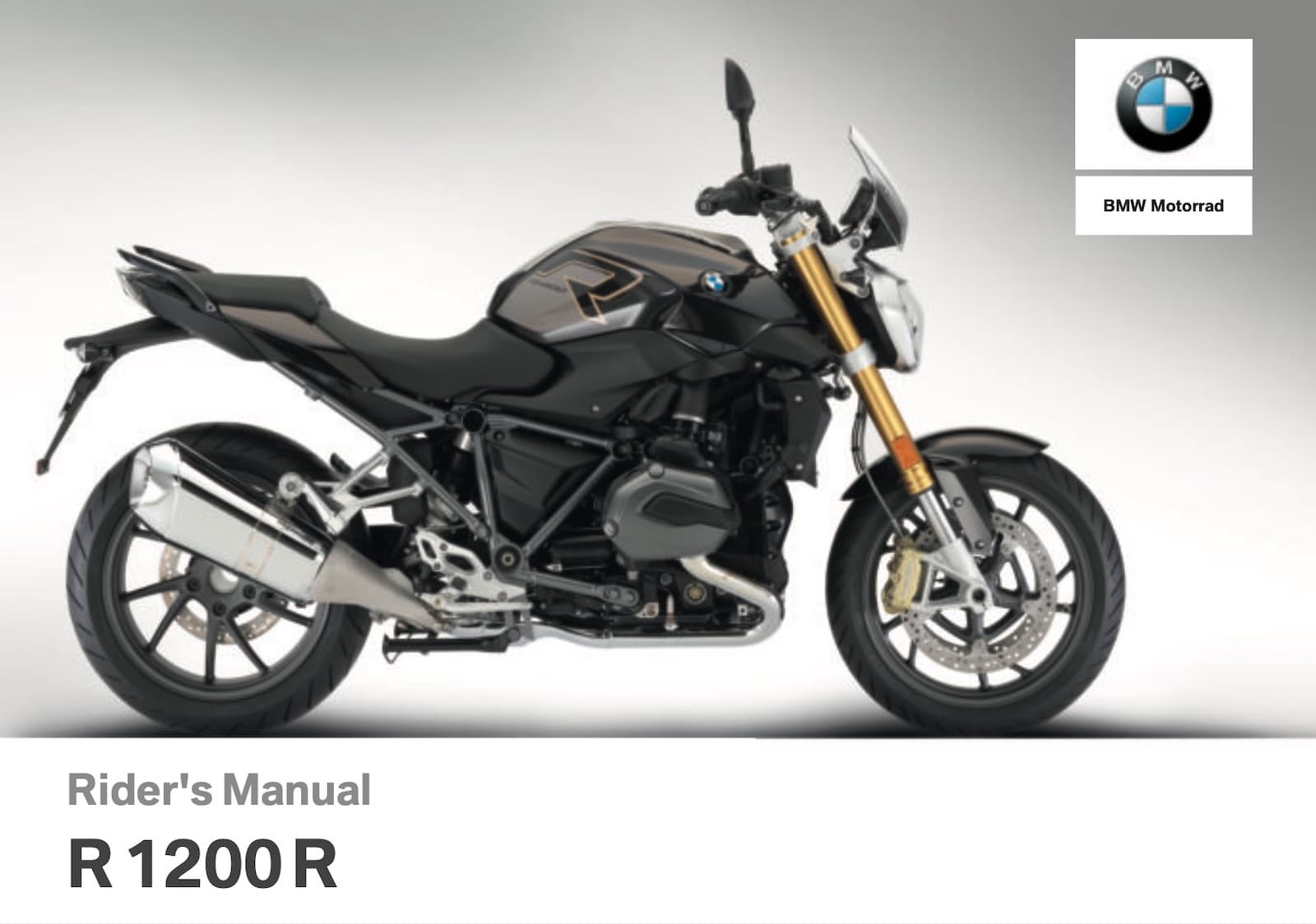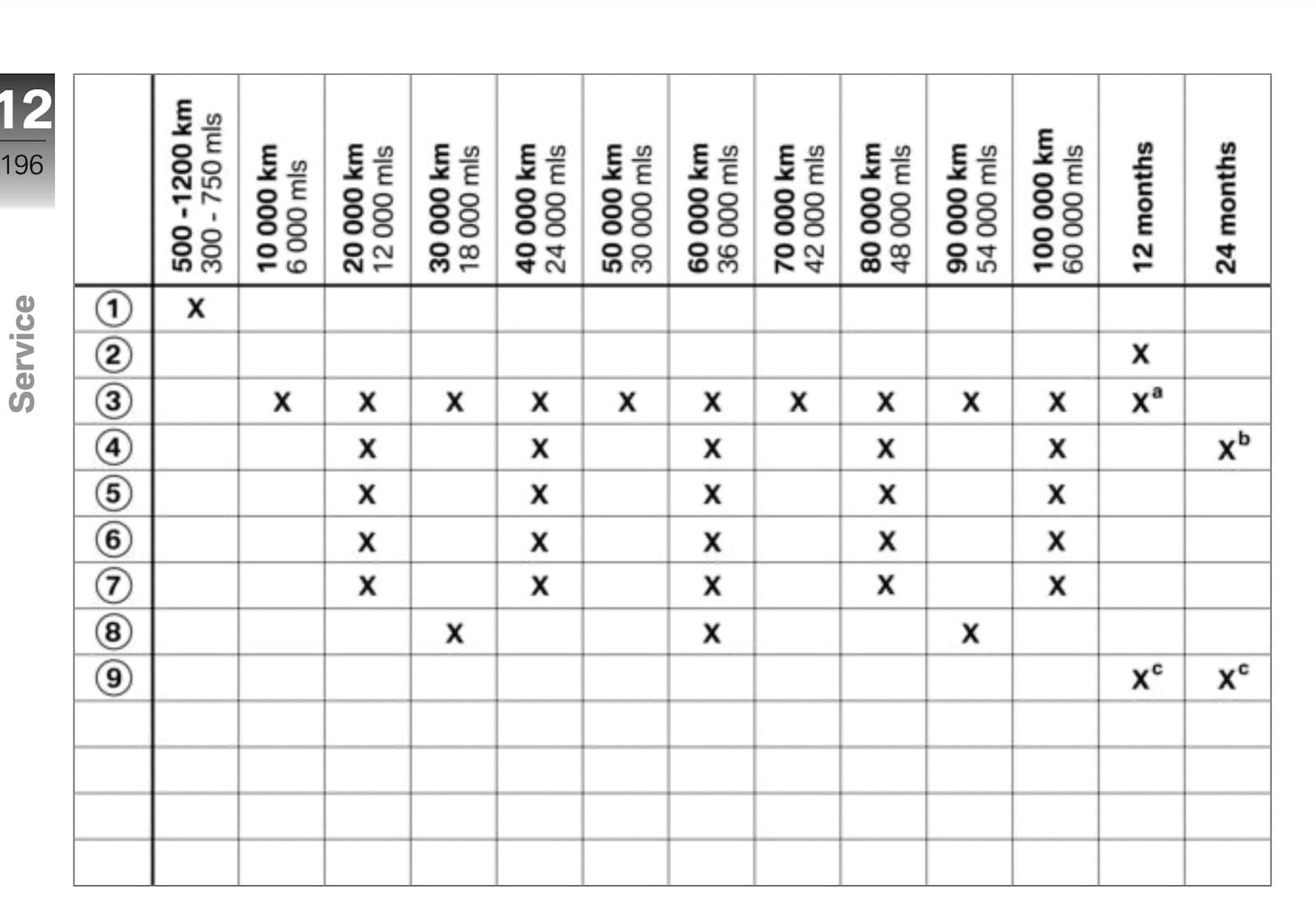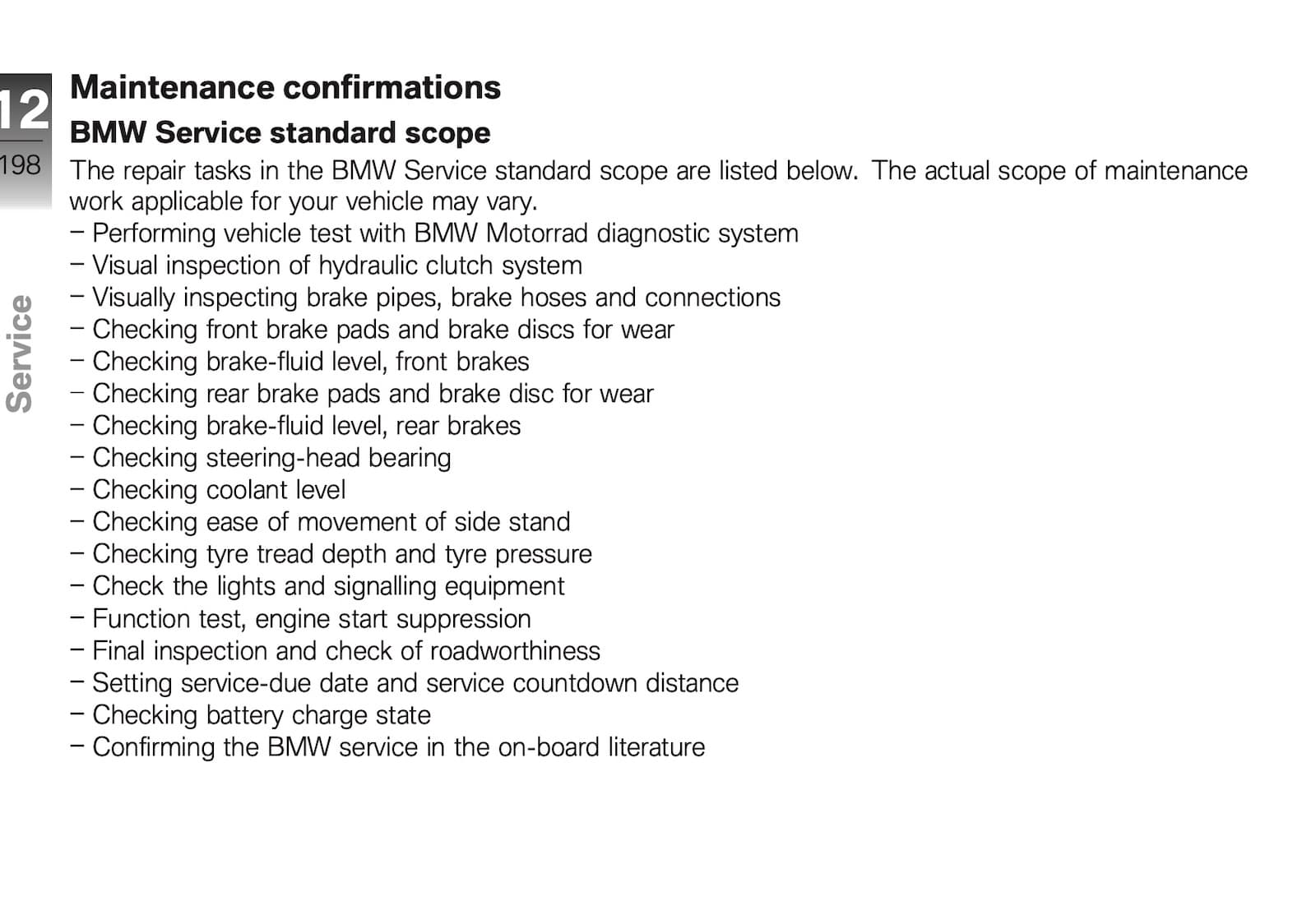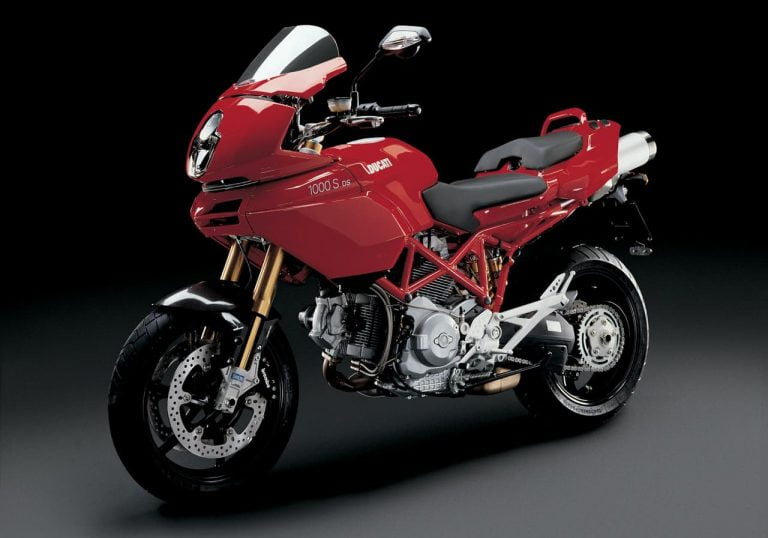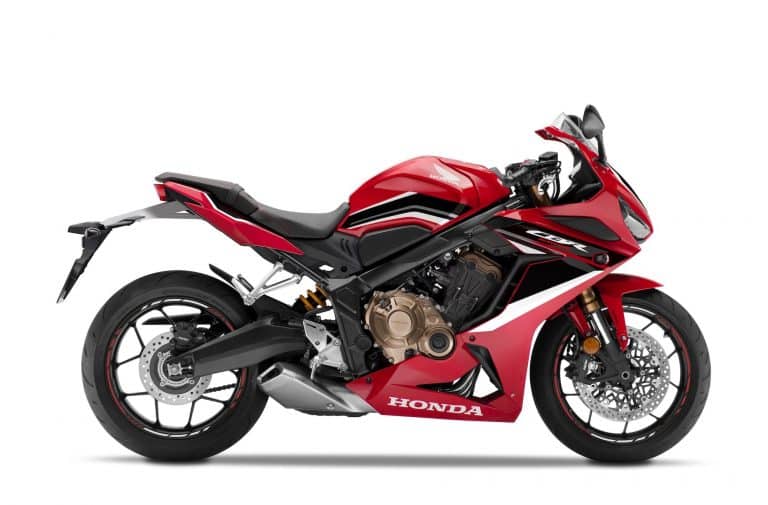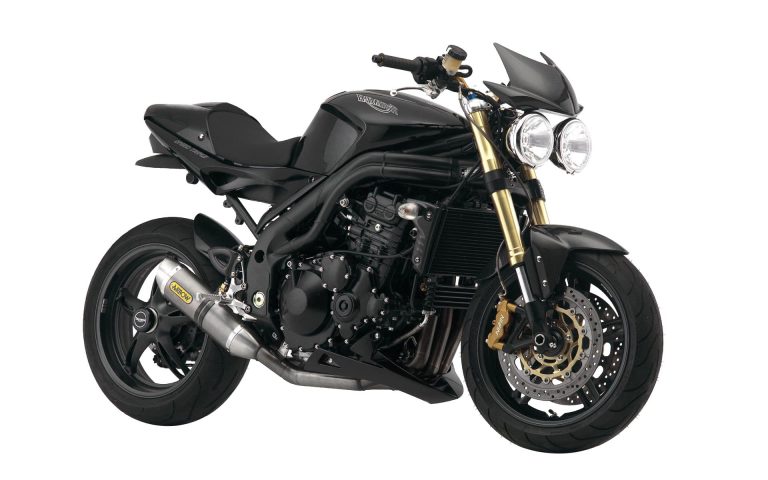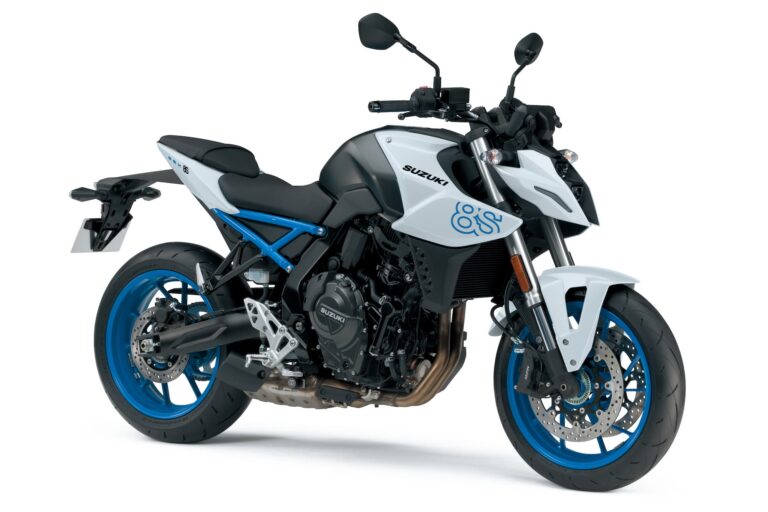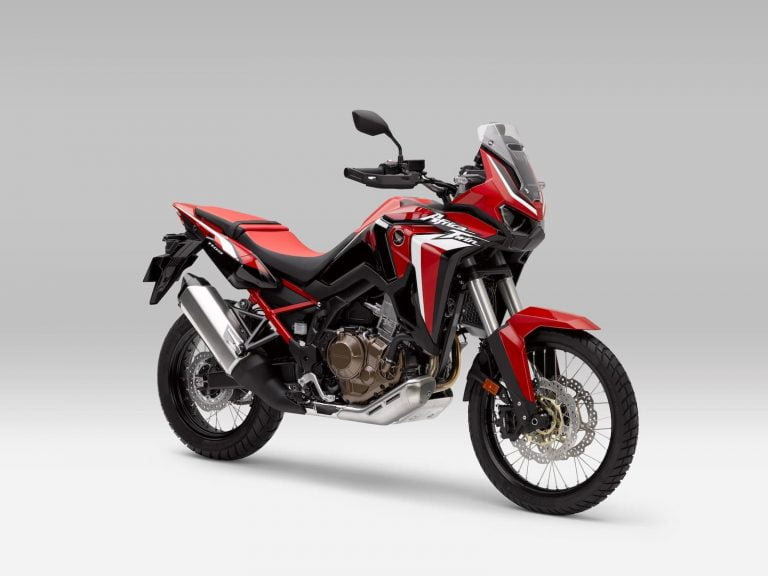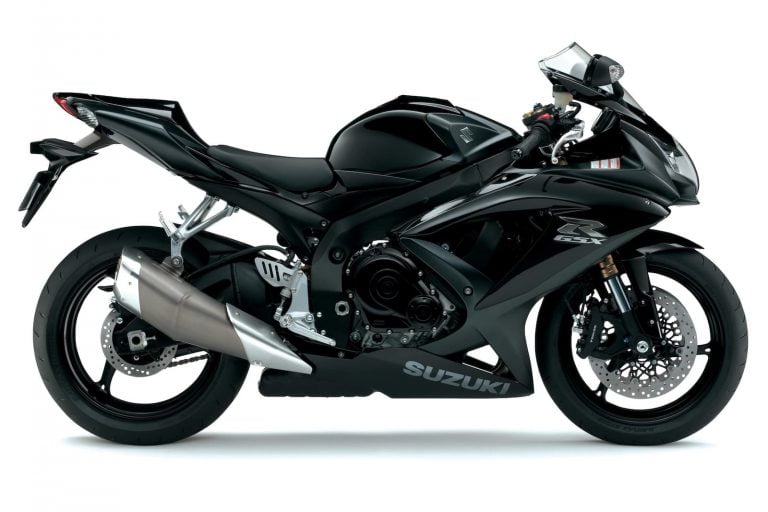BMW R 1200 R (2015-2018, liquid-cooled) Maintenance Schedule and Service Intervals
This is the maintenance schedule and service intervals for the liquid-cooled BMW R 1200 R, made between 2015 and 2018.
The BMW R 1200 R is BMW’s premium naked roadster powered by a boxer twin. It sits in the middle of the spec range, between the retro R nineT (which still has an air/oil-cooled engine) and the super-fast BMW S 1000 R.
The heart of the BMW R 1200 R is the 1170 cc air/liquid-cooled boxer twin. It has two overhead camshafts and four valves per cylinder. In the R 1200 R, the engine is tuned to make a healthy 92 kW / 123 bhp at 7750 rpm, and peak torque of a whopping 125 Nm /92 ft-lb at 6500 rpm, most of which is available from very low in the rev range, as is typical of BMW’s boxers.
Here are all the BMW R 1200 R / R 1250 R maintenance schedules:
- R 1200 R Hexhead — WIP
- R 1200 R Camhead — WIP
- BMW R 1200 R Liquid-cooled (2015-2018)
- BMW R 1250 R ShiftCam engine (2019+)
Power output is via a six-speed transmission and shaft final drive.
Generally, maintenance for the liquid-cooled BMW R 1200 R matches that for other similar-series BMW motorcycles, like the 2013 BMW R 1200 GS.
First published on August 2, 2022, but since updated.
This site has links for things like oil and spark plugs from which we earn a commission (which unfortunately nobody can save, not even us). If you appreciate this work, then please use those links. Thanks!
Service intervals for the BMW R 1200 R (Liquid-Cooled)
Like many liquid-cooled boxer twin BMWs, the BMW R 1200 R generally has 6 000 mi / 10 000 km service intervals at which BMW recommends you should change the oil and oil filter, plus do a number of other standard checks for fluid levels, leaks, and general lubrication.
You should do a basic service every year or 6 000 miles / 10 000 km — whichever comes earlier.
BMW recommends that every 12000 miles or 20000 km you change the oil in the bevel gears, replace the spark plugs, check valve clearances, and change the air filter.
There are a number of other periodic changes for fluids, plus more detail in the annual maintenance schedule below.
BMW R 1200 R Standard Service Items List
Below is a list of items to do at a standard service on a BMW R 1200 R. Do these according to the maintenance schedule below.
Items marked [D] are for BMW dealers to perform (they need special tools, unless you have them).
| BMW R 1200 R standard service scope |
|---|
| [D] Perform vehicle test with BMW Motorrad diagnostic system |
| Visually inspect hydraulic clutch system |
| Visually inspect brake pipes, hoses, and connections |
| Check front brake pads and brake discs for wear |
| Check front brake fluid level |
| Check rear brake pads and brake disc for wear |
| Check rear brake fluid level |
| Check steering head bearing |
| Check coolant level |
| Check side stand for ease of movement, lubricating if necessary |
| Check tire tread depth and tire pressure |
| Check all lights and signalling equipment |
| Check engine start suppression (clutch, side stand, gears) |
| Do a final inspection and general roadworthiness check |
| [D] Set the service due date and countdown distance, using a GS-911 if available |
| Check the battery charge state (Replace with 12Ah AGM as necessary) |
| [D] Confirm the service in the on-board literature |
BMW R 1200 R Maintenance Schedule
Below is the full maintenance schedule for the BMW R 1200 R.
Follow the earlier of time-based or distance-based intervals. Keep following it in the pattern shown — every 1, 2, or 3 distance intervals, or every 1-2 years.
The break-in service is not shown as these are no longer sold new. Besides, usually a dealer does it, to keep the warranty intact.
One interesting thing is that BMW doesn’t mention changing the coolant, just checking it. BMW uses a “permanent” (OAT or HOAT) antifreeze that isn’t meant to be changed. Various dealers/ mechanics still say you can change it every 3-4 years, though. Especially if you notice the level declining.
| mi x 1000 | 6 | 12 | 18 | 24 | |
|---|---|---|---|---|---|
| km x 1000 | 10 | 20 | 30 | 40 | Every |
| Perform complete Standard Service (see list above) | Year | ||||
| Change oil | ✓ | ✓ | ✓ | ✓ | Year |
| Change oil filter | ✓ | ✓ | ✓ | ✓ | Year |
| Change oil in rear bevel gears | ✓ | ✓ | 2 years | ||
| Change spark plugs (NGK LMAR8D-J) | ✓ | ✓ | |||
| Check valve clearances | ✓ | ✓ | |||
| Change air filter | ✓ | ✓ | |||
| Change oil in telescopic forks | ✓ | ||||
| Change brake fluid, front and rear, in the entire system | After 1 year, then every 2 years |
Tire Sizes and Specs for the BMW R 1200 R
Below are what the manual recommends for tire pressures.
| Wheel | Tire size | Tire pressure (cold) |
|---|---|---|
| Front | 120/70 – ZR 17 | 2.5 bar / 250 kPa / 36 psi |
| Rear | 180/55 – ZR 17 | 2.9 bar / 290 kPa / 42 psi |
For the tire type, typically people use road or sport touring tires on the BMW R 1200 R.
About the BMW R 1200 R (liquid cooled, 2015-2018)
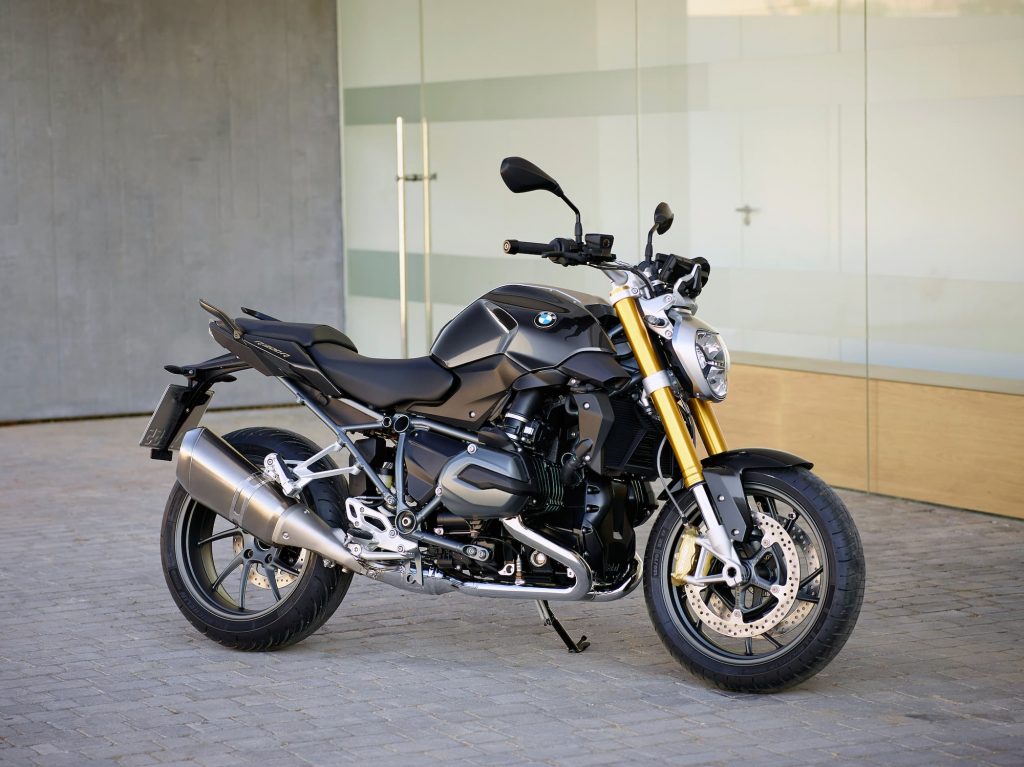
The 2015 BMW R 1200 R continued in the same vein as the R 1200 R before it — a premium, highly refined roadster based on the venerable boxer twin.
What makes the 2015 R 1200 R interesting is that just the previous year, BMW released the 2014-2016 BMW R nineT based on the last-gen twin-cam air/oil-cooled engine.
For a brief year, the R nineT and R 1200 R actually had the same engine. The difference? Well — it was hard to tell for that year. The R nineT seemed cooler, and the R 1200 R seemed statelier, as well as having some higher-spec components, like suspension and ride aids. But they were pretty close.
That changed with the 2015 model year of the R 1200 R. The R-R got the updated partially liquid-cooled and more powerful engine, and the R nineT kept its air/oil-cooled donk — something it kept for many years afterwards, even as the premium BMWs moved into the world of ShiftCam and TFT displays (in later generations).
Conceptually, the BMW R 1200 R stayed the same for 2015 as a boxer-powered roadster. But BMW did make some important changes.
Firstly, the engine. Liquid cooling! BMW had gradually been rolling out liquid-cooling to the rest of the boxer range.
Liquid cooling was received with mixed response initially. On the other R bikes, BMW uses twin radiators, letting them keep the Telelever front suspension. But on the R 1200 R, BMW chose to ditch Telelever for the first time, opting for standard telescopic forks.
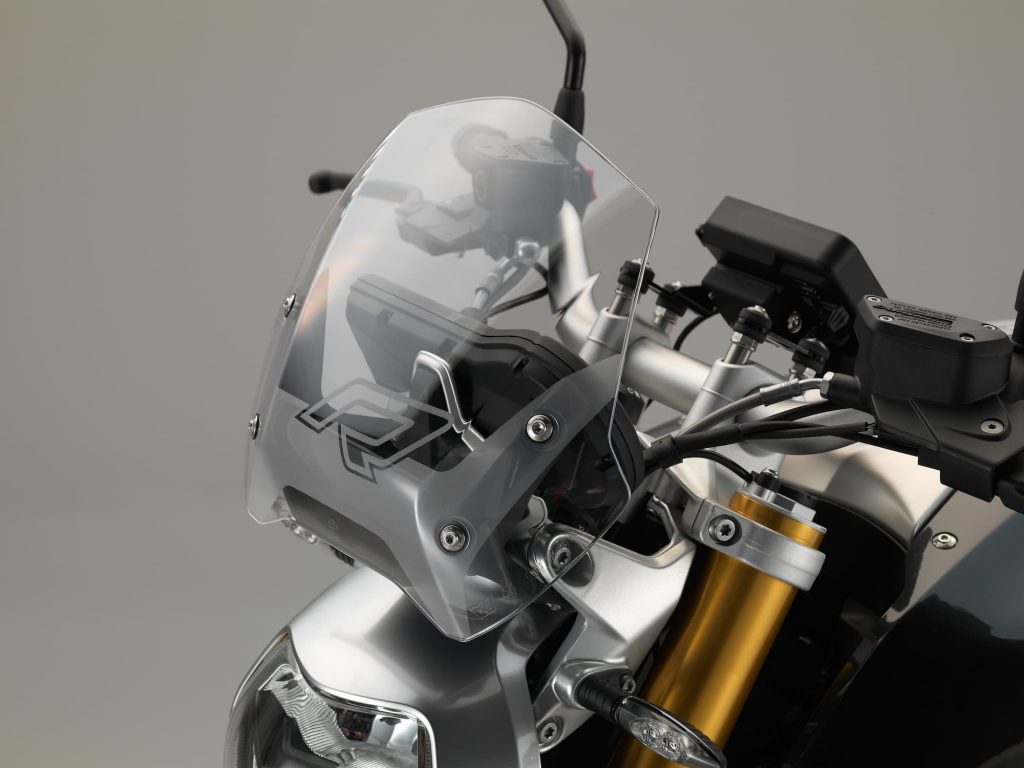
The fork on the 2015 R 1200 R is similar to the one on the S 1000 RR superbike, and also similar to the one on the new (at the time) 2014 BMW R nineT. It’s not adjustable, and the rear shock (via a Paralever rear end) is adjustable for preload and rebound damping
If you have Dynamic ESA, you can set damping settings from the handlebar.
The dash is one area where the BMW R 1200 R is quite different from the R nineT. Whereas the R nineT kept retro gauges. the 2015-2018 R 1200 R has a mixed analogue / digital display with a large LCD component.

The 2015 R nineT also has a lot of ride aids. It has standard ABS and ASC (traction control), and you can also get Riding Modes Pro which gets you DTC that works in corners — though you don’t get cornering ABS on the early models of the 2015-2018 BMW R 1200R. (The 2017 and 2018 model R 1200 R do get cornering ABS though.)
From a maintenance perspective, the best bit about the liquid-cooled engine in the BMW R 1200 R is the fact that it gets you wider maintenance intervals for valve service — 12000 miles / 20000 km rather than half that for the air/oil-cooled previous gen.
BMW doesn’t specify a replacement interval for the coolant, but other motorcycles with OAT coolants generally recommend 4-year coolant replacement intervals. In BMW maintenance schedules they just say to check the coolant level periodically.
After 2018, BMW updated the R 1200 R to the new 2019 BMW R 1250 R with the ShiftCam larger-capacity engine.
Reference — Manual for the BMW R 1200 R
The above maintenance schedule information came from the rider’s manual, BMW service manual software, and online parts catalogues.
You can download the rider’s manual directly from BMW here.
